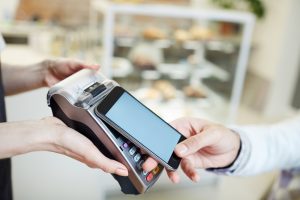In today’s digital-first economy, businesses in Canada rely heavily on point-of-sale (POS) systems to process transactions quickly and efficiently. Whether you run a retail store, restaurant, or e-commerce business, your POS system is the backbone of your operations. But as technology advances, so do the risks. Cybercriminals are increasingly targeting POS systems to steal sensitive data, making POS security in Canada a top priority for merchants of all sizes. Protecting your business isn’t just about compliance—it’s about maintaining customer trust, ensuring secure transactions, and safeguarding your revenue.
In this article, we’ll explore the risks of POS fraud, strategies for payment fraud prevention, and the tools every Canadian business should use to strengthen merchant protection.
Why POS Security Matters in Canada
POS systems manage sensitive customer data, including credit card numbers, debit card PINs, and transaction histories. A single security breach can result in financial losses, chargebacks, regulatory penalties, and lasting damage to your brand reputation. Canada’s strong adoption of digital payments and contactless technologies has been a double-edged sword. While consumers enjoy convenience, criminals view POS systems as valuable entry points. This makes POS security Canada not just a regulatory necessity, but also a business survival strategy.
Common POS Fraud Risks in Canada
To understand the importance of merchant protection, let’s look at some of the most common risks Canadian businesses face:
-
Card Skimming – Fraudsters attach devices to card readers to steal magnetic stripe data.
-
Malware Attacks – Cybercriminals install malicious software on POS systems to capture transaction data.
-
Insider Threats – Employees with unauthorized access can exploit systems for personal gain.
-
Network Vulnerabilities – Weak Wi-Fi security or outdated systems provide hackers with easy access.
-
Phishing Scams – Fraudulent emails or texts trick employees into revealing login details.
-
Chargeback Fraud – Customers falsely claim they didn’t authorize a transaction, forcing merchants to refund payments.
These risks highlight why businesses must prioritize POS security in Canada and invest in strong fraud detection tools.
Key Strategies for POS Security
Protecting your POS system requires a layered approach. Here are some proven strategies:
1. Use Encrypted Payments
End-to-end encryption (E2EE) ensures that sensitive payment data is scrambled during transmission, making it nearly impossible for hackers to intercept and use. This is the foundation of secure transactions.
2. Adopt EMV and Contactless Technology
Chip-enabled (EMV) cards are more secure than magnetic stripe cards. Combined with tap-to-pay options, they significantly reduce fraud compared to outdated methods.
3. Regular Software Updates
Outdated software leaves POS systems vulnerable to malware. Update POS software regularly to patch known security flaws and strengthen your defense.
4. Implement Strong Access Controls
Limit system access to authorized staff only. Use role-based permissions to reduce insider risks and prevent unauthorized activities.
5. Monitor Transactions in Real-Time
Many POS providers offer monitoring dashboards and alerts for unusual activity. Real-time analysis improves payment fraud prevention by catching suspicious transactions before they escalate.
6. Secure Your Network
Use firewalls, VPNs, and strong Wi-Fi encryption. A compromised network can expose your entire POS system to attackers.
7. Train Employees
Staff are often the first line of defense. Train them to recognize phishing scams, suspicious behavior, and security protocols to strengthen overall merchant protection.
Regulatory Requirements for POS Security in Canada
Canadian merchants must also comply with the Payment Card Industry Data Security Standard (PCI DSS). These requirements include encryption, firewalls, secure password policies, and regular audits. Non-compliance can result in hefty fines and loss of the ability to process card payments.
Additionally, Canada’s Personal Information Protection and Electronic Documents Act (PIPEDA) requires businesses to protect personal data and notify customers in case of a breach. This further underlines the importance of robust POS security in Canada.
Tools and Technologies for Merchant Protection
The good news is that Canadian businesses have access to advanced tools that help minimize risks:
-
Tokenization – Replaces sensitive card details with unique tokens that hackers can’t use.
-
Fraud Detection AI – Machine learning algorithms analyze patterns to detect and block fraudulent activity.
-
Multi-Factor Authentication (MFA) – Adds an extra layer of security to POS logins.
-
Cloud-Based POS Systems – Offer automatic updates, stronger encryption, and centralized monitoring.
By combining these tools, businesses create a strong defense against fraud and strengthen merchant protection.
Payment Fraud Prevention in Action: Case Examples
-
Retail Store in Toronto – Implemented EMV terminals and tokenization, reducing chargebacks by 40%.
-
Restaurant in Vancouver – Switched to cloud-based POS with real-time alerts, detecting fraud attempts instantly.
-
E-commerce Business in Montreal – Integrated AI-powered fraud detection, lowering false declines, and improving customer trust.
These examples demonstrate how payment fraud prevention strategies can protect Canadian businesses while keeping customers safe.
The Cost of Ignoring POS Security
Failure to secure your POS system can result in:
-
Financial losses from chargebacks or stolen data.
-
Penalties from banks, card networks, or regulators.
-
Permanent damage to your business reputation.
-
Loss of customer trust, which is hard to rebuild.
In a digital age where consumers expect secure transactions, businesses cannot afford to take risks with POS systems.
Future of POS Security in Canada
The landscape of POS security in Canada is evolving with innovations like biometric verification, blockchain-enabled transactions, and advanced AI fraud monitoring. As consumers adopt mobile wallets and contactless payments, businesses must keep pace with emerging threats and technologies. The future of merchant protection lies in the proactive adoption of these tools and continuous staff training.
Final Thoughts
POS systems are the lifeblood of modern Canadian businesses, but they’re also prime targets for cybercriminals. Protecting your business requires more than just technology—it demands awareness, proactive planning, and consistent vigilance.
By investing in encryption, real-time monitoring, employee training, and AI-driven detection, businesses can achieve strong POS security in Canada while maintaining customer confidence.
Fraud may be evolving, but so are the tools to stop it. The sooner your business adopts these strategies, the safer your transactions and customer relationships will be.
FAQ’s
Q1. How do you secure POS transactions?
A: Securing POS transactions involves encryption, EMV technology, fraud monitoring, and employee training. Together, these measures create multiple layers of defense to ensure safe and reliable payments.
Q2. What are common POS fraud risks in Canada?
A: The most common risks include card skimming, malware attacks, insider threats, chargeback fraud, and phishing scams. Businesses must implement fraud detection tools and staff training to reduce exposure.
Q3. Do POS systems in Canada include fraud detection?
A: Yes, many modern POS systems include built-in fraud detection tools, real-time monitoring, and AI-driven alerts to help merchants prevent unauthorized activity and protect customer data.




